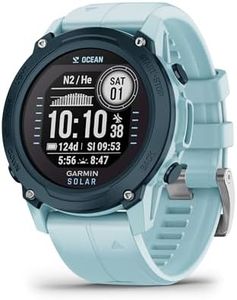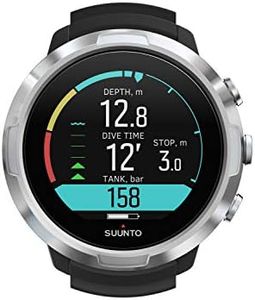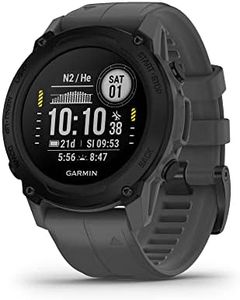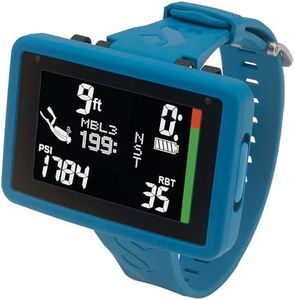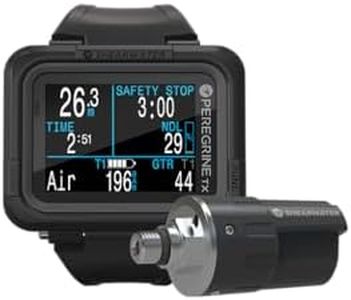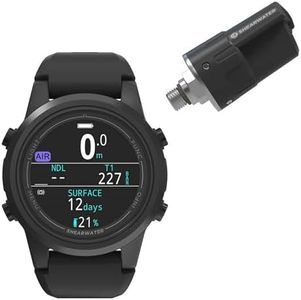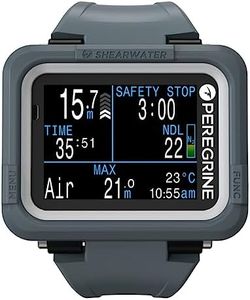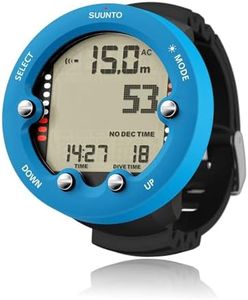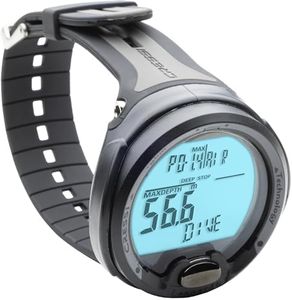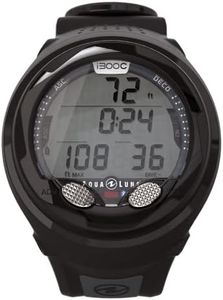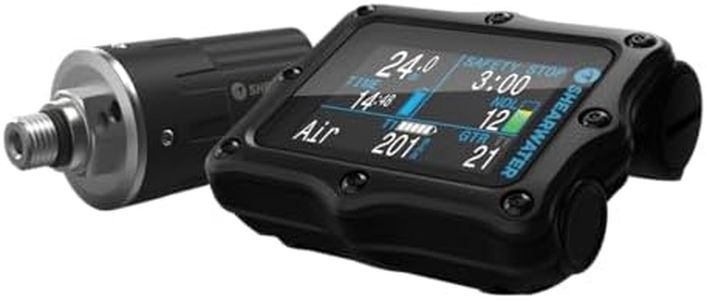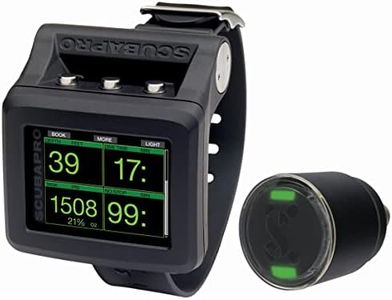We Use CookiesWe use cookies to enhance the security, performance,
functionality and for analytical and promotional activities. By continuing to browse this site you
are agreeing to our privacy policy
10 Best Dive Computers
From leading brands and best sellers available on the web.By clicking on a link to a third party's website, log data is shared with that third party.
Buying Guide for the Best Dive Computers
Picking the right dive computer is essential for a safe and enjoyable diving experience. A dive computer tracks vital information during your dive, such as depth, time, and decompression status, helping you avoid accidents and extend your underwater adventures. Your choice should reflect your diving experience, the environments you'll be diving in, and any special features you might need. Understanding key specifications will help you decide which dive computer matches your needs best.Display Type and SizeThe display on a dive computer shows crucial information like depth, time, and decompression status. Displays can be basic LCDs or more advanced color screens. A larger, brighter display is easier to read underwater—especially in low visibility—but may be bulkier on your wrist. If you often dive in murky waters or wear thick gloves, a big, high-contrast screen might be better. For travel or casual diving, a smaller, simpler display could be all you need.
Algorithm and Decompression ModelA dive computer's algorithm calculates your safe dive times and decompression limits, helping to prevent decompression sickness. Some computers use conservative algorithms, giving you safer, shorter dives, while others allow more aggressive limits. If you are a newer diver or prioritize safety, choose a computer with a more conservative algorithm. More experienced divers who dive frequently may prefer an algorithm with adjustable conservatism settings. It's important to understand how conservative you want your dives to be and select a model that matches your diving style.
Gas Mix CapabilityDive computers can support different breathing gases like air, nitrox, or even trimix for technical dives. Basic models work only with air, while mid-range ones handle nitrox (enriched air), and advanced models support multiple gases or trimix. If you only plan on recreational diving, air or nitrox support is often enough. Technical divers, or those looking to progress into more advanced diving, should consider computers with multi-gas capabilities.
User Interface and ControlsNavigating the dive computer's menus and settings should be simple and intuitive, especially when underwater or wearing gloves. Some computers use buttons, while others have touchscreens. A straightforward interface is best for beginners, while advanced users might appreciate customizable settings. When choosing, consider how easy it is to operate the device in the conditions you most often dive.
Dive Log and ConnectivityMany modern dive computers log your dives digitally, allowing you to review important data later. Some models let you transfer this information to a computer or smartphone via cable, Bluetooth, or USB stick. If you enjoy analyzing your dives or want a digital record, look for connectivity options that match your devices. Those who prefer manual logbooks may not need these features.
Battery Type and LifeDive computers use either rechargeable or replaceable batteries. Rechargeable batteries are convenient but require charging between trips, while replaceable batteries may be swapped out quickly on the go. Consider how often you dive and the availability of charging or replacement options on your trips. For frequent or remote diving, longer battery life or easily replaceable batteries are especially important.
Durability and Water ResistanceYour dive computer must withstand pressure, salt water, and occasional bumps. Look for a sturdy build and high water resistance rating, often indicated in meters or feet. If you dive deep or in challenging environments, choose a model specifically rated for such conditions. For casual, shallow dives, standard water resistance is usually sufficient.
Mounting StyleDive computers come in various formats: wrist-mounted, console-mounted, or watch-style. Wrist or watch-style computers are very convenient and most popular. Console-mounted models integrate with other gauges. Consider your comfort, how you like to monitor your gear, and what you carry during your dives when choosing the mounting style.

